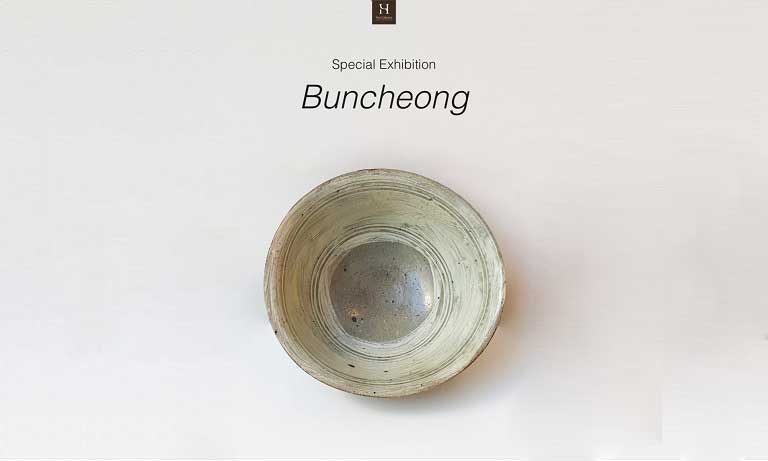
Buncheong ceramics
Han Collection | 33 Museum Street | Bloomsbury | London WC1A 1LH | www.hancollection.co.uk
Monday 2 Nov, Tues 3 Nov, Wed 4 November 2020, 11am-6pm

Han Collection: Buncheong
Buncheong ceramics
Han Collection | 33 Museum Street | Bloomsbury | London WC1A 1LH | www.hancollection.co.uk
Monday 2 Nov, Tues 3 Nov, Wed 4 November 2020, 11am-6pm
Buncheong is one of the three main ceramic traditions of Korea, alongside celadon and white porcelain. To some extent, buncheong can be seen as bridging the gap between the other two forms. It was produced during the 15th and 16th centuries, in the early years of the Joseon dynasty, when Goryeo celadon had ceased to be produced, but before white porcelain became the dominant ceramic tradition.
The term ‘buncheong’ is a shortened form of ‘bunjang hoecheong sagi’, which was coined in the 1930s by South Korea’s first art historian, Go Yuseop. It can be translated as “grey-green ceramics decorated with powder”. The stoneware body and glaze of buncheong are very similar to those of celadon but generally less processed and refined. As a result, some buncheong pieces can resemble celadon of the preceding dynasty.
The main decorative element of buncheong ware is the application of white slip under the glaze. Slip can be applied by brush or pieces can be partially or completely dipped; the latter creates an effect that looks like white porcelain. Slip can be combined with a number of different decorative techniques, including stamped patterns, incised (sgraffito) designs or iron-painted decoration. The decoration is usually free-spirited, experimental or even playful – a marked contrast to the formal elegance of the celadon pieces they replaced.
Although buncheong pieces appear rustic, suggesting that they were made for the common people, large numbers of buncheong pieces, particularly during the fifteenth century (before hard-paste porcelain became viable), were manufactured for the royal family and also central and provincial governments. Some pieces are stamped with the names of the government departments to which they were headed.
Buncheong ware exhibits distinctive regional characteristics. For example, those made in Gyeongsang Province feature inlaid and stamped decoration applied in regular patterns. In contrast, buncheong from Jeolla Province typically has incised or sgraffito designs, which tend to be more freely executed. Buncheong from Mount Gyeryong in Chungcheong Province is famous for its bold, iron-painted decoration that contrasts beautifully with its white slip background.
The increasing popularity of white porcelain during the 16th century contributed to the decline in buncheong production. However, the final blow was the Japanese invasions of Korea between 1592 and 1598. When the devastated ceramic industries of Joseon were rebuilt in the 17th century, only porcelain production was resumed.
Nevertheless, there was renewed interest in the buncheong tradition during the 20th century. There are now many fine examples of contemporary buncheong ceramics produced by artists such as Shin Sangho, Yu Byungho, Kim Munho, Kim Panki and, of course, Ji Suntak.